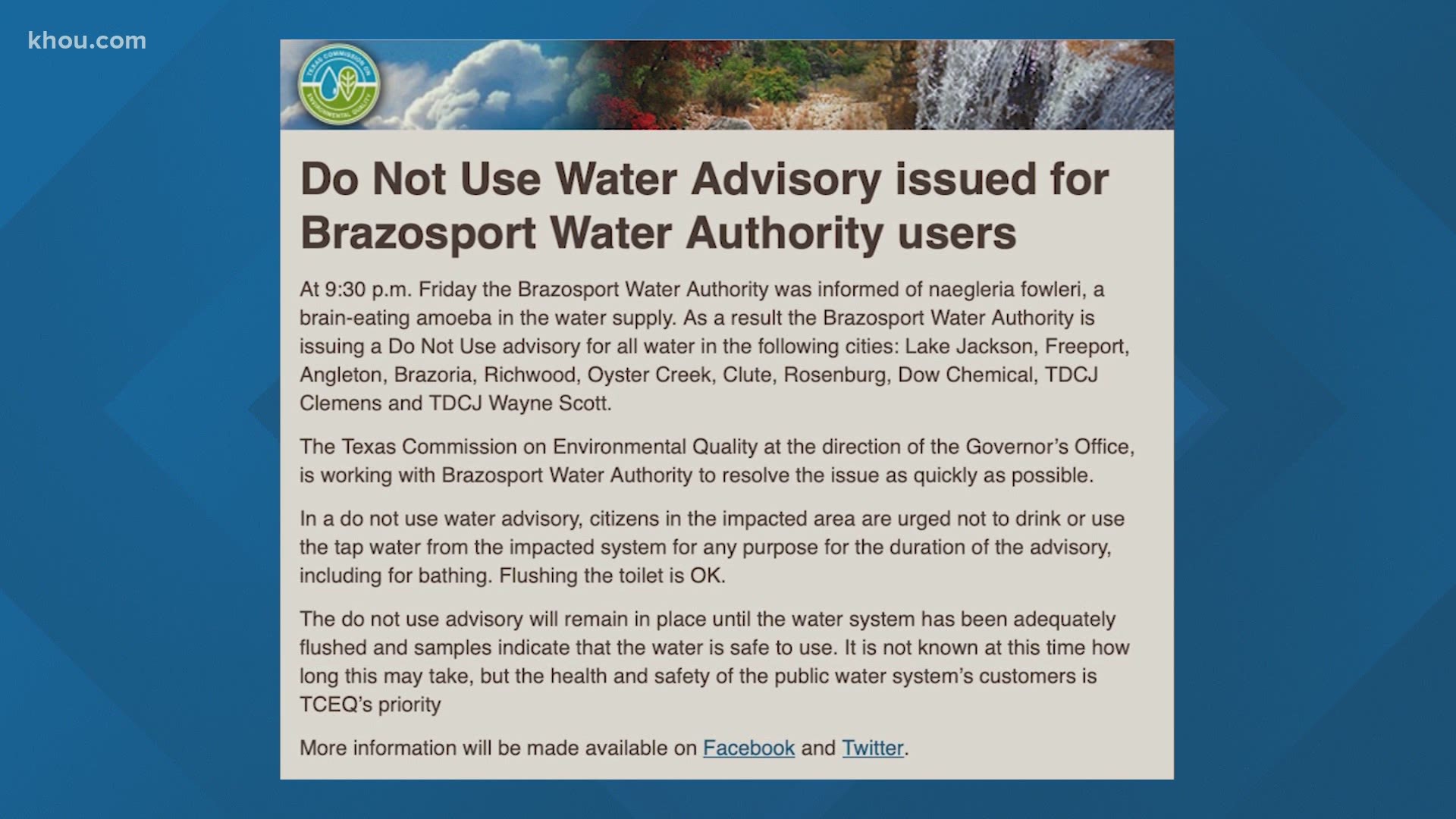A brain-eating amoeba, also known as a Naegleria fowleri, infects people when water containing the amoeba enters the body through the nose, according to the Centers for Disease Control and Prevention.
Infection is rare and typically occurs when people go swimming or diving in warm freshwater places, like lakes and rivers. Very rarely, infections have been reported when people submerge their heads, cleanse their noses during religious practices, or irrigate their sinuses (nose) using contaminated tap or faucet water.
Naegleria fowleri can grow in pipes, hot water heaters, and water systems, including treated public drinking water systems.
The CDC said you can't get infected from drinking water contaminated with Naegleria. You can only be infected when contaminated water goes up into your nose.
Symptoms
Signs and symptoms of brain-eating amoeba include:
- Severe frontal headache
- Fever
- Nausea
- Vomiting
Symptoms start 1-9 days (median 5 days) after swimming or other nasal exposure to Naegleria-containing water. People die 1-18 days (median 5 days) after symptoms begin. The infection is difficult to detect because the disease progresses rapidly so that diagnosis is usually made after death.
How to protect yourself
Infection is rare and typically occurs when people go swimming or diving in warm freshwater places, like lakes and rivers. Very rarely, infections have been reported when people submerge their heads, cleanse their noses during religious practices, or irrigate their sinuses (nose) using contaminated tap or faucet water.
The Texas Department of State Health Services is not recommending that people avoid bodies of water where someone has contracted the infection. But it does have some precautions people can take when swimming in our lakes and rivers, including:
• Avoid water-related activities in bodies of warm freshwater during periods of high water temperature and low water levels.
• Hold the nose shut or use nose clips when taking part in water-related activities in bodies of warm freshwater.

